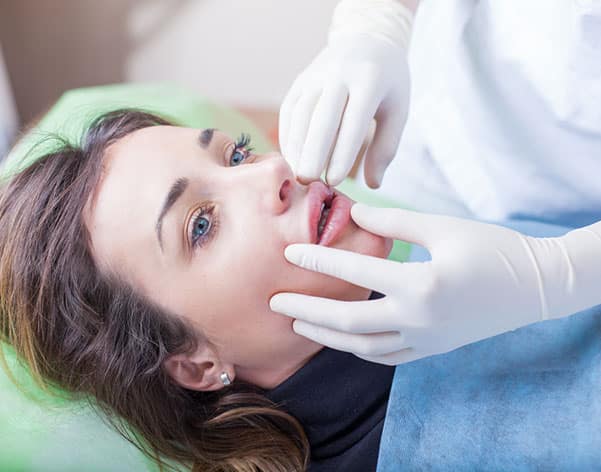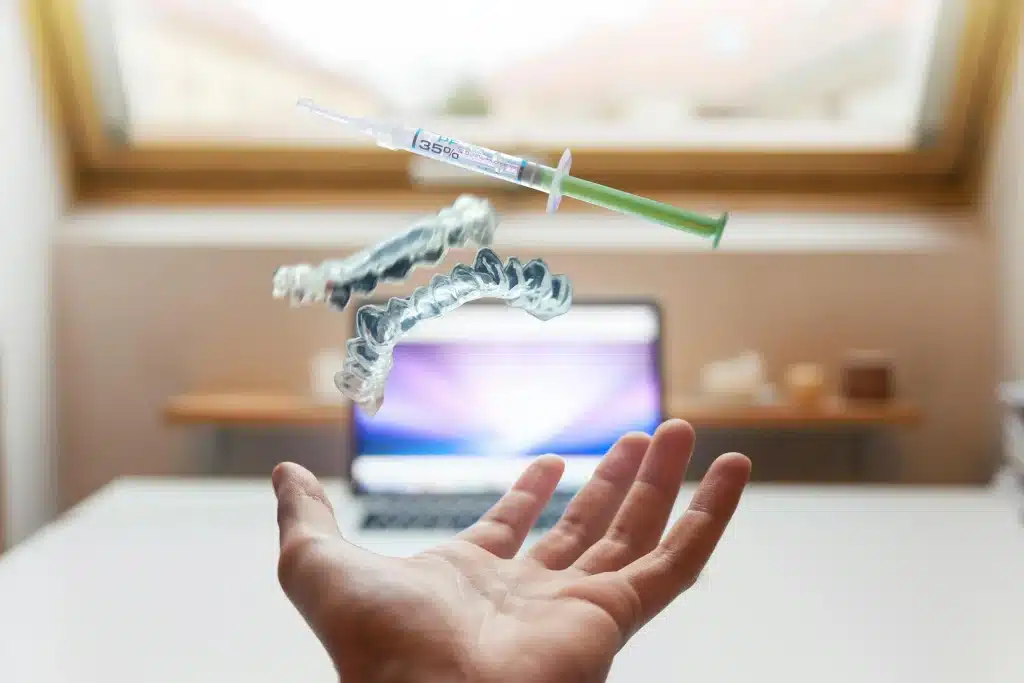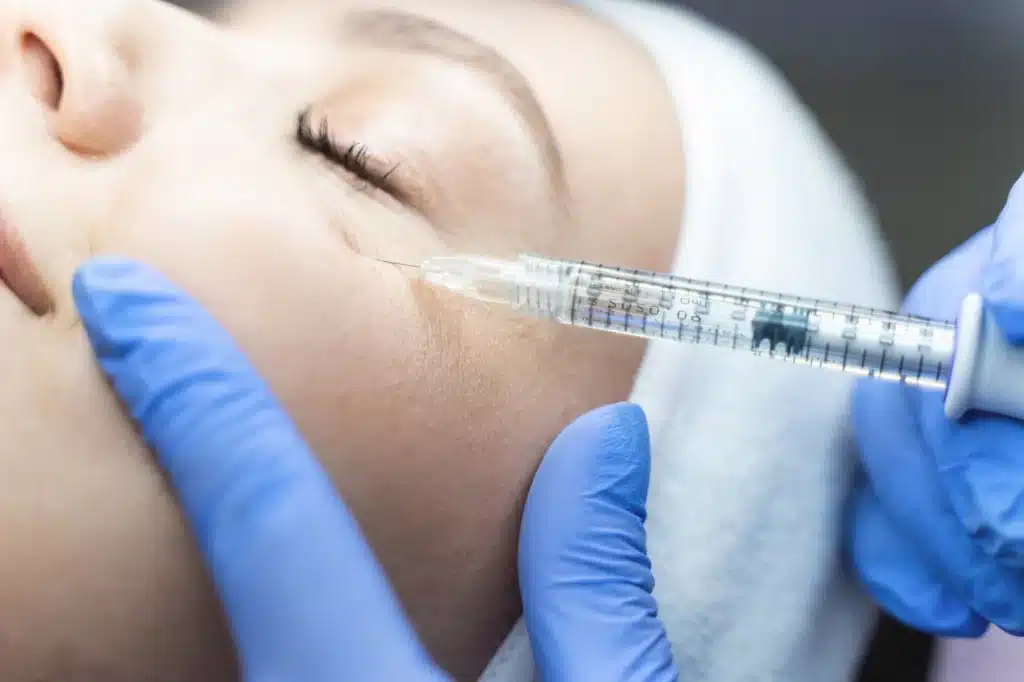How to Assess the Lips for Lip Augmentation
The ideal lips can be characterized as one with high protrusion, a pronounced lip curl, and increased vermilion display, and this has been the cornerstone for attraction in the lower half of the face for much of Western society. People have associated these specific characteristics as a standard for beauty and physical attraction. They represent youth and health in a similar way that thin, wrinkled, flattened, and less plump lips represent old age. In the evolutionary and biological sense, the attractiveness of fuller lips may be due to their depiction of a potentially young and healthy mate.
The importance placed upon aesthetics has caused many fields in surgery to modernize at a tremendous pace. The increasing trend is towards minimally invasive, office-based procedures with minimal postoperative recovery time and reduced patient discomfort. In line with this philosophy, the development of injectable dermal fillers has helped transform facial cosmetic correction to be faster, more efficient, and safer. Its impact on lip augmentation has received resounding approvals from across the medical field. Nowadays, hyaluronic acid is the leading injectable dermal filler to help tackle the issues of lip aging.
Products based on hyaluronic acid (HA) have proved to be exciting materials that work superbly for soft tissue augmentation. HA is a naturally occurring polysaccharide found in the dermis, which means it has a low allergenic potential, and has greater tissue residence time has resulted through the cross-linking process. As injectors refine their techniques and as manufacturers work on better cross-linking materials and techniques, these agents have proved to be superior in lip augmentation, and in the right hands with the best technique, medical professionals have routinely obtained excellent cosmetic results that approach, and in some cases exceed, one year.
What makes up the ideal lips?
It is important to reiterate that what is described here reflects cultural beauty standards in the Western hemisphere, not the standards of all the cultures on the globe. The technicalities of the ideal lip found in Western society are as follows:
- The length of the closed, relaxed mouth should equal the distance between the medial aspects of the irises.
- The ratio of the mucosa of the upper to lower lips should be 1:1.6 (the so-called golden ratio)
- The inter-pupillary line and commissural line should be parallel when the mouth is relaxed.
- The distance from the base of the nose to the upper lip should be 1820mm
- The distance from the lower lip to the point of the chin should be 3640mm.
- A line from the midpoint of the nose to the chin (Steiner line) should touch the upper lip.
- The nasolabial angle should range from approximately 85105°.
- Maintain the ski-jump edge, which is a point of inflection as the lip turns from glabrous skin to mucosa on the upper lip.
As originally proposed by Leonardo da Vinci, to have the ideal lip would also mean having the ideal face. Be mindful of the criteria above and act in a way that benefits your patient first and foremost. It would be against the principle of cosmetic surgery that, the process of trying to satisfy the criteria for the ideal lip as described above, you neglect considering the overall appearance of the face. Staying true to this, you should divide the face horizontally into three equal parts; these three parts are composed of the distances between the frontal hairline and the inferior edge of the frontal bone; the supraorbital margin and the base of the nose; and the base of the nose and the inferior aspect of the chin, respectively. In general, mathematically idealized facial proportions translate into a symmetric, oval, or heart-shaped face with prominent cheekbones, a tapered jaw line, a narrow nasal base, and relatively thin lips.
Assessing lips
There are two important factors that one should consider when assessing the lips: one is the shape of the lips themselves, and the other is the importance of the support provided to the lower third of the face by bony structures and the teeth. Start by having your patient sit in a well-lit area so any cosmetic defects can be accentuated. Begin examining the lips while in repose and during movement to assess the position and symmetry of perioral muscle movement. Assess whether or not your patient has undergone prior lip augmentation procedures and if so, which injectable fillers like Belotero were used. This is critical to a good outcome. Examine the degree of volume lost in the lips. The lip dimensions should be measured to ascertain the amount of correction needed in relation to the ideal lip dimensions and qualities as mentioned above. These usually include the following
- Lip thickness: This is associated with lip prominence, and its value to beauty standards can be heavily influenced by the ethnicity of a patient. Thin lips have the advantage of producing an aesthetic camouflage that blocks the view of any loss or movement of teeth.
- Lip contour: The contours are viewed at the frontal and profile perspective to determine the exact amount of lip curvature, curl, and inclination.
- Lip posture: Relax the lips and assess for any gaps in the lips. The ideal lips will have no gaps.
- Lip prominence: This relates to the nasolabial angle. Strive to maintain 85105°.
- Lip activity and function: Assess for hypertonic or hypotonic lips since a hypertonic lower lip may push the lower incisor teeth, while a hypertonic upper lip levator muscle can result in a gummy smile.
Other areas of interest are the prominence of the chin and nose since the Steiner, Burstone, and Ricketts lines must be correctly aligned after augmentation. Document the findings with photographs.
As discussed earlier, dental health is crucial in terms of a successful lower face rejuvenation. The teeth and alveolar processes must be maintained for an excellent smile. If in doubt, refer to a dental professional for further evaluation before commencing the procedure.
Conclusion
It is unfortunate that there exists no standard guideline to guide lip augmentation procedures. This generates a substantial procedure for error, as evident in individuals whose lips have been excessively augmented to the point where they have lost their natural proportions and their lips appear uneven and unnatural. Techniques that favor subtle correction presents the most natural and favorable result. This article attempts to shed some light on what makes lips beautiful, and that should lead to more successful rejuvenation procedures and satisfied patients.
References
- Nguyen DD, Turley PK, ‘Changes in the Caucasian male facial profile as depicted in fashion magazines during the twentieth century’, Am J Orthod Dentofacial Orthop, 114 (1998), pp. 208-217.
- Klein AW and Ayers BW. Lip Augmentation. (ed). Aesthetic Plastic Surgery. : Elsevier; 2009. pp. 855-860
- Bisson M, Grobbelaar A, ‘The esthetic properties of lips: a comparison of models and nonmodels’, The Angle orthodontist, 74 (2004) pp.162-166.
- Niamtu J, ‘New lip and wrinkle fillers’, Oral and maxillofacial surgery clinics of North America, 17 (2005), pp.17-28.
- Wesley NO, Rohrer TE. Evaluation of Beauty and the Aging Face. (ed). Dermatology, 4th ed.: Elsevier; 2018. pp. 2571-2577.
- Naini FB, ‘Facial Aesthetics: Concepts and Clinical Diagnosis’, Wiley-Blackwell (2011).





